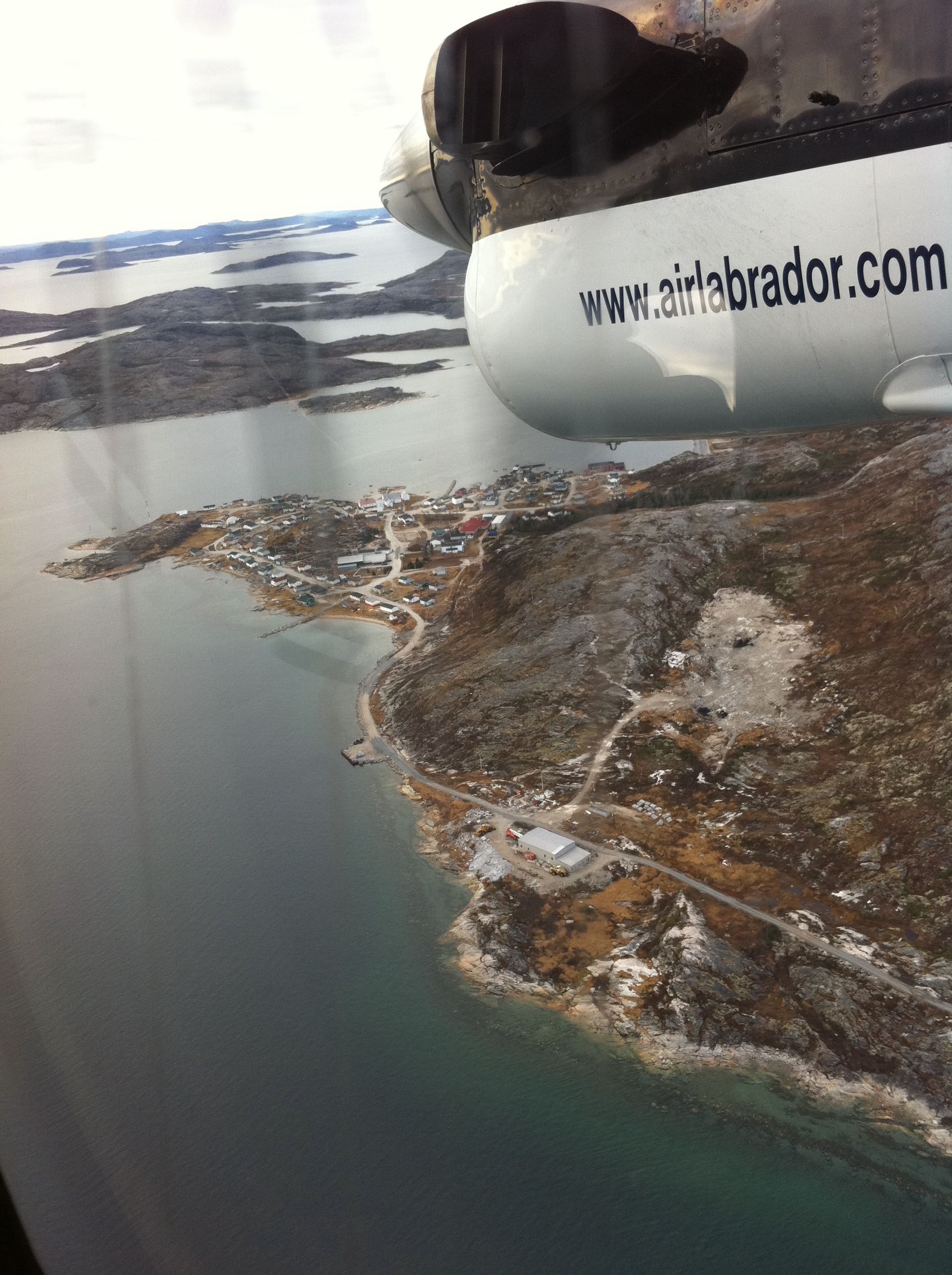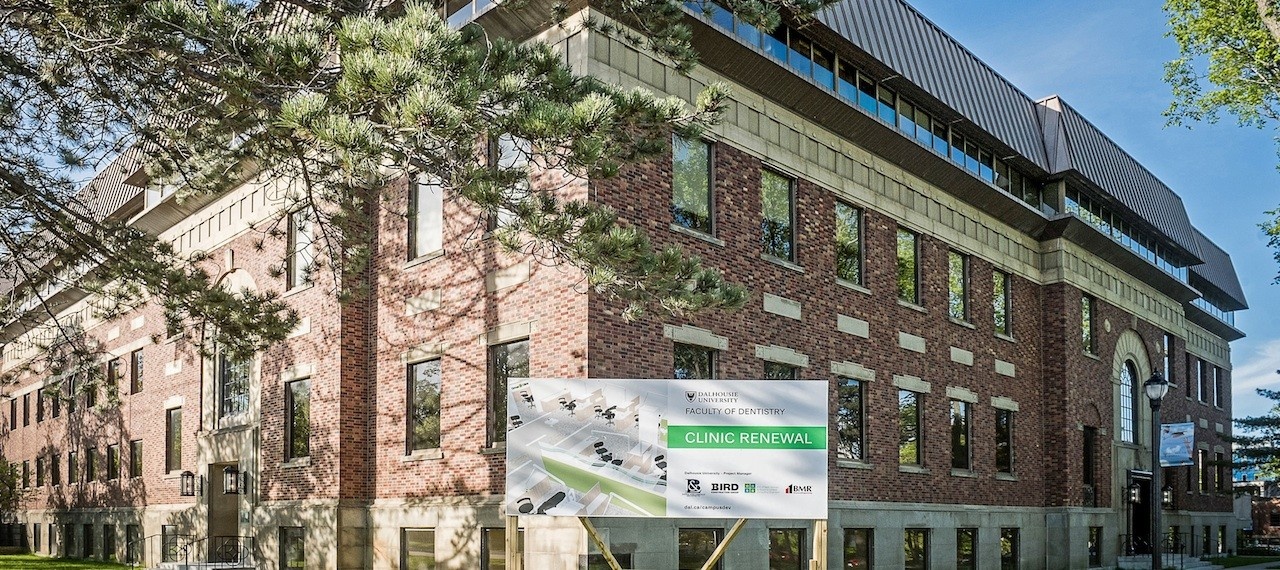News
» Go to news mainNorthern adventures: Dal dentistry students gain experience in Labrador
 A Twin Otter plane is used to fly dentistry students into remote areas of Labrador
A Twin Otter plane is used to fly dentistry students into remote areas of Labrador
The option of spending two weeks in Labrador, working seven days a week, in -50°C January temperatures, is surprisingly popular with Dalhousie dentistry students. Each year, around 30 of them vie for the privilege of being one of the six chosen to go.
Celebrating its fifth anniversary this year, the Labrador rotation is a dental public health option that gives students a pass/fail grade, but no credit. Yet those who pack their long underwear and brave the three-hour Twin Otter flight from Happy Valley-Goose Bay claim that the experience transforms them from dental students into “real dentists.”
The dental students arrive in Nain, population 1,424, the northern-most permanent settlement in Newfoundland and Labrador, and roll up their sleeves to go to work right away. There are two operatories in the small clinic and a pair of students works in one of them, one as the dentist and the other as the assistant. In the first years of the Labrador rotation, students also worked in Hopedale, a small community nearby, but now the work is concentrated in Nain.
Working in the second operatory nearby is Dr. Frances Tompkins and dental assistant Pam DeVouge-Murphy. Tompkins is an instructor with Dalhousie’s Department of Dental Clinical Sciences. Both she and DeVouge-Murphy spend two to three-week stretches in Labrador, with gaps of five weeks in between.
Amanda Demsey was one of the dentistry students who travelled to Labrador in 2014. “Going to Labrador was the best part of dental school, hands down,” she says. “I had heard that everyone really enjoyed it, so I assumed that I would, too, but I didn’t expect it to be so much fun.”
She also says that she didn’t expect to work so much. “We worked 9.00 to 6.00 each weekday and 10.00 to 4.00 on the weekends. As students, we would normally see two patients a day in Halifax, but there we were seeing eight patients and doing more in each appointment than we’d often do in a day.”
Assistant dean of students, Dr. Ferne Kraglund, says that working in Labrador presents a radically different routine for the students compared to the dental clinic in Halifax. For one thing, sterilized equipment is not delivered to them each day. “Day in and day out, they are booking appointments, cleaning up and sterilizing equipment, and dealing with a wide range of patients and oral health issues.”
The students also see a lot of children. “I didn’t expect to see as many kids as we did, but there were lots, and it was awesome,” says Demsey. “We rarely see kids at Dal.”
The demands of the rotation help to determine who makes the cut. “We go partly by marks,” says Kraglund. “Students miss two weeks of class time, so they need to be in a strong position academically. We also look at how they are doing clinically. Can they work independently? And we assess their personality – how they interact with patients and faculty and the rest of the people who make up the team. It also helps if they travel well, because flying on a Twin Otter is not for the faint of heart!”
Although the dental students sometimes found working in a practice setting challenging, partly because of the time it takes them to carry out procedures, they found their work rewarding. “Some of the patients we saw were in pain, and there is only a dentist in Nain every five weeks, so we tried to get as many of those patients in as possible,” says Demsey.
Because the Nunatsiavut government funds all dental work, Demsey and her classmates were able to deliver treatments that could give patients a few more years with their teeth, rather than do extractions. They were also able to take the time to play with the children, talk to them about their teeth, and give them toothbrushes. “We wanted them to associate going to the dentist with something fun,” says Demsey.
“And with our teen patients, we did as much as we could while we were there and then focused on preventative work in the hope that they can keep their teeth well into their adult years.”
“It’s a good opportunity for all students,” agrees Kraglund. “They really benefit from community-based learning and experience. Not only are they learning about dentistry, they are also interacting with other health services while they are there. It’s a very community-driven experience.”
After five successful years in Labrador, Kraglund says the Faculty of Dentistry is now exploring the possibility of offering a similar service in Cape Breton. “It’s far enough away to give the students a new experience,” she says. “We are the only dental school for Atlantic Canada and we see it as our responsibility to take care of all four Atlantic provinces.”
Partially as a result of her experiences in Labrador, Demsey chose to work in St. John’s after she graduated in 2015. “I enjoyed working in Nain so much, I’d happily do some locum work up North. It’s also just so beautiful, I’d love to go travelling there as well.”
Recent News
- Start planning for DentDays 2024
- Climb every mountain: Dr. Kevin Walsh enjoys a challenge
- The 2023 QEII Foundation Diversity in Health Care Bursaries: Part of this community
- A whole new ball game in the Faculty of Dentistry
- A donation with great impact
- DentDays dates announced
- 2024 JD McLean Lecture: An interview with Bob Hope
- Finding a silver lining in a snowstorm
